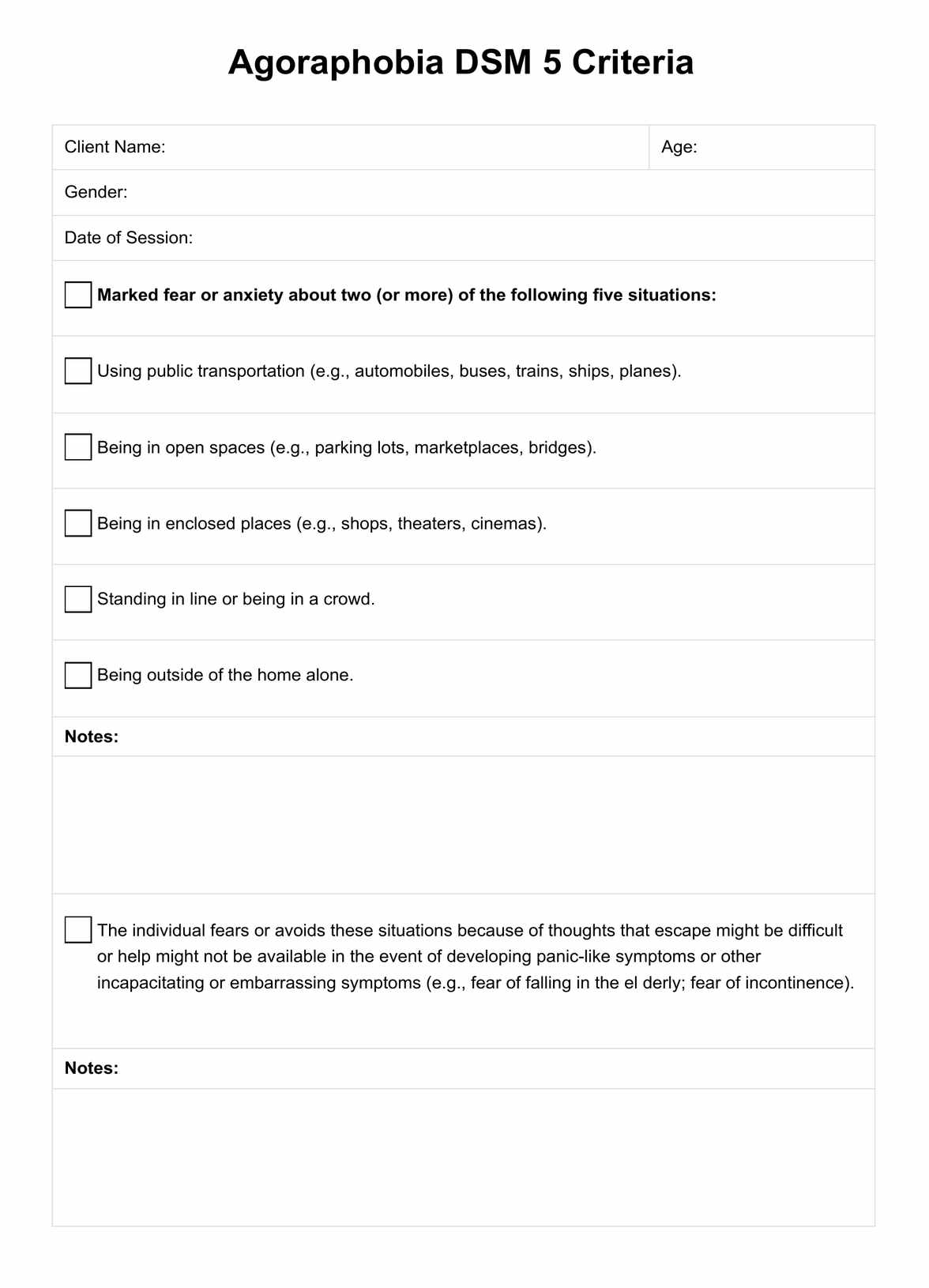No. Agoraphobia and social anxiety disorder (social phobia) are two different conditions. Social anxiety focuses on a fear of social situations due to worries about embarrassment or being judged. Agoraphobia is a fear of being in situations where escape may be tricky, or help might not be available in the event of a panic attack.

Agoraphobia DSM 5 Criteria
Explore a helpful documentation tool to help screen for the symptoms of agoraphobia among clients. Download a free PDF resource here.
Agoraphobia DSM 5 Criteria Template
Commonly asked questions
Agoraphobia can heavily impact daily functioning, leading to avoidance of various places or situations, difficulty traveling far from home, or needing a companion when out of the house, thereby restricting independence and social interactions.
Agoraphobia can occur with or without panic disorder. With panic disorder, the person experiences panic attacks and intense fear of having one in specific situations. Agoraphobia without panic disorder involves fear of the situations themselves, not necessarily linked to expected or unexpected panic attacks.
EHR and practice management software
Get started for free
*No credit card required
Free
$0/usd
Unlimited clients
Telehealth
1GB of storage
Client portal text
Automated billing and online payments











